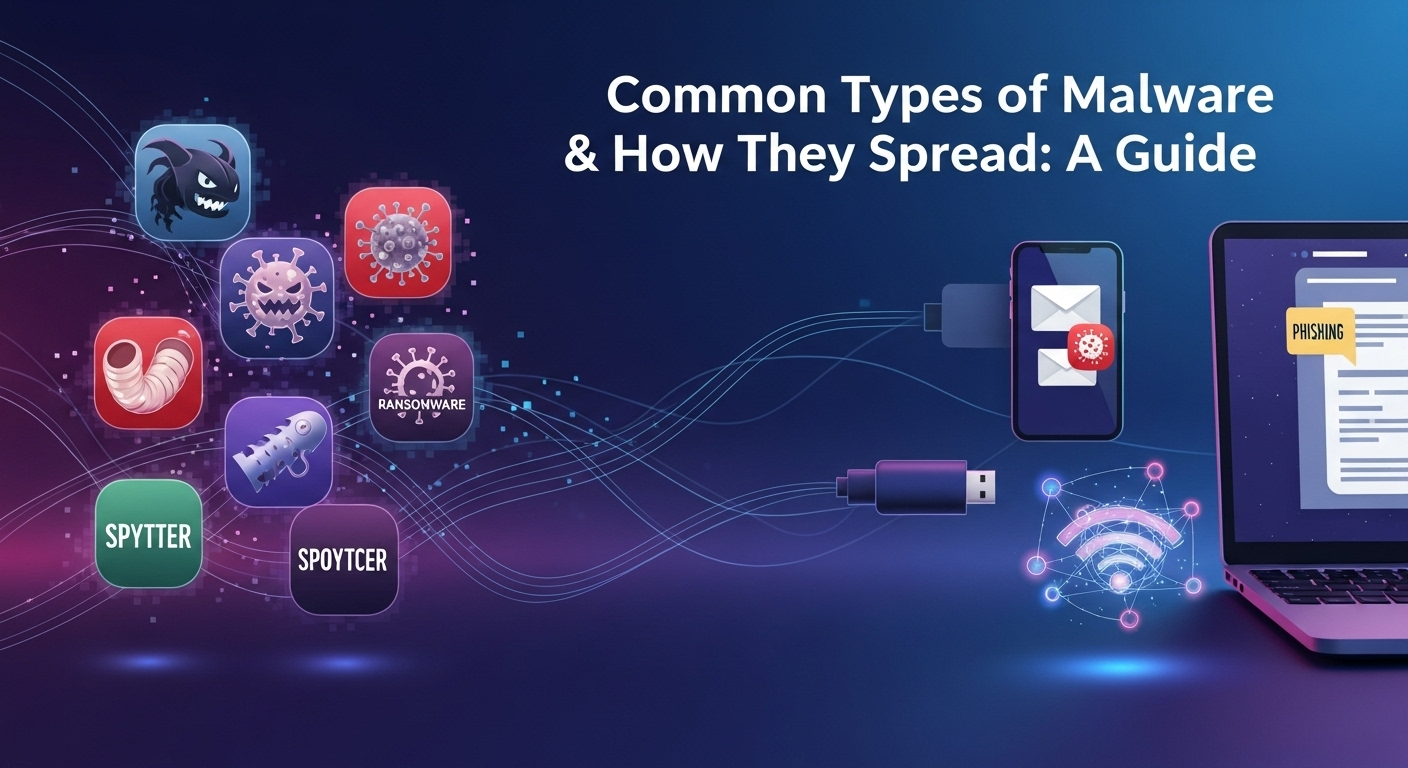In today's interconnected world, nearly every aspect of our lives, from banking and shopping to communication and entertainment, happens online. This digital integration brings immense convenience but also exposes us to a hidden, ever-present threat: malware. Understanding the landscape of these digital dangers is the first and most crucial step toward safeguarding our personal information, financial assets, and digital identity. In this comprehensive guide, we will explore the common types of malware and how they spread, equipping you with the knowledge to protect your digital world. What is Malware? A Foundational Understanding Before diving into the specific categories, it's essential to grasp what malware truly is. The term "malware" is a portmanteau of "malicious software." At its core, malware is any software or code intentionally designed to cause damage to a computer, server, client, or computer network. Unlike a legitimate program that might have an accidental bug, malware is created with harmful intent from the outset. Its creators, known as cybercriminals or threat actors, have a wide range of motivations, from financial gain and espionage to pure disruption and vandalism. The primary purpose of malware is to breach the three pillars of information security: confidentiality, integrity, and availability. It might secretly steal your personal data (violating confidentiality), alter or delete your files (compromising integrity), or lock you out of your own system until a ransom is paid (denying availability). Malware operates in the background, often without any immediate or obvious signs, making it a stealthy and dangerous foe. It can lie dormant on a system for weeks or months, waiting for the right command or condition to activate its malicious payload. Understanding this fundamental intent is key. Malware isn't just a technical glitch; it's a weapon. It could be a simple script designed to display annoying pop-up ads or a highly sophisticated state-sponsored tool engineered for cyber warfare. The one common thread is its malicious nature. Recognizing that any unexpected computer behavior could potentially be a symptom of a malware infection is the first step in developing a security-conscious mindset, which is your best defense against the ever-evolving threats lurking online. The Notorious Family: Diving into Common Malware Types The world of malware is incredibly diverse, with different types engineered for specific malicious goals. Just as a doctor needs to identify a specific illness to prescribe the right treatment, understanding the different categories of malware helps us recognize threats and implement the appropriate defenses. From self-replicating code to deceptive software, each type has unique characteristics and poses distinct risks to your digital life. Viruses: The Classic Digital Contagion A computer virus is one of the oldest and most well-known types of malware. Much like its biological namesake, a computer virus requires a host to survive and spread. It attaches itself to a legitimate program or file, often an executable file (.exe), a document macro, or a boot sector. When a user runs the infected program or opens the infected file, the virus code is executed first. This allows the virus to activate its malicious payload and, crucially, to replicate itself by attaching to other clean files on the system and any connected networks. The spread of a virus is heavily dependent on human action. It doesn't typically spread on its own across networks without a user first sharing the infected file via email, a USB drive, or a network share. The payload of a virus can vary dramatically. Some are relatively benign, designed only to replicate and spread as a proof of concept. Others are highly destructive, capable of corrupting files, deleting data from a hard drive, or rendering a computer completely unusable. The infamous ILOVEYOU virus, for example, spread via email and overwrote critical files, causing billions of dollars in damage worldwide. Worms: The Self-Replicating Menace While often used interchangeably with viruses, worms are a distinct and arguably more dangerous category of malware. The key difference is that worms do not need a host program or human help to spread. They are standalone pieces of software that can replicate themselves and use computer networks to automatically spread to other vulnerable systems. This ability to self-propagate makes them capable of spreading exponentially faster than viruses, potentially infecting millions of machines in a matter of hours. Worms exploit vulnerabilities in operating systems or software applications to gain access to a new machine. Once inside, they scan the network for other computers with the same vulnerability and repeat the process. This relentless replication can consume massive amounts of network bandwidth, slowing down or even crashing entire networks. Famous examples include the WannaCry worm, which exploited a Windows vulnerability to spread its ransomware payload, and Stuxnet, a highly sophisticated worm believed to have been designed to sabotage Iran's nuclear program by targeting industrial control systems. Their ability to operate and spread autonomously makes them a significant threat to both individual users and large corporate networks. Trojans (Trojan Horses): Deception at its Finest Named after the mythical Greek tale, a Trojan Horse is a type of malware that disguises itself as a legitimate, useful, or harmless piece of software. It tricks users into willfully installing it on their systems. Unlike viruses and worms, Trojans do not replicate themselves. Their primary goal is to create a secret backdoor into your computer, allowing a remote attacker to gain unauthorized access and control. You might download what you believe is a free game, a handy utility, or even a software update, but hidden inside is the malicious code. Once installed, a Trojan can perform a wide variety of malicious activities. It can be used to: Install other malware, such as spyware or ransomware. Create a botnet, turning your computer into a "zombie" used for large-scale attacks. <strong>Log your keystrokes</strong> (keylogging*) to steal passwords and credit card numbers. View, copy, delete, or modify your files. Activate your webcam and microphone to spy on you. Because they rely on social engineering—tricking the user—Trojans are one of the most common infection methods. They prey on human curiosity and the





